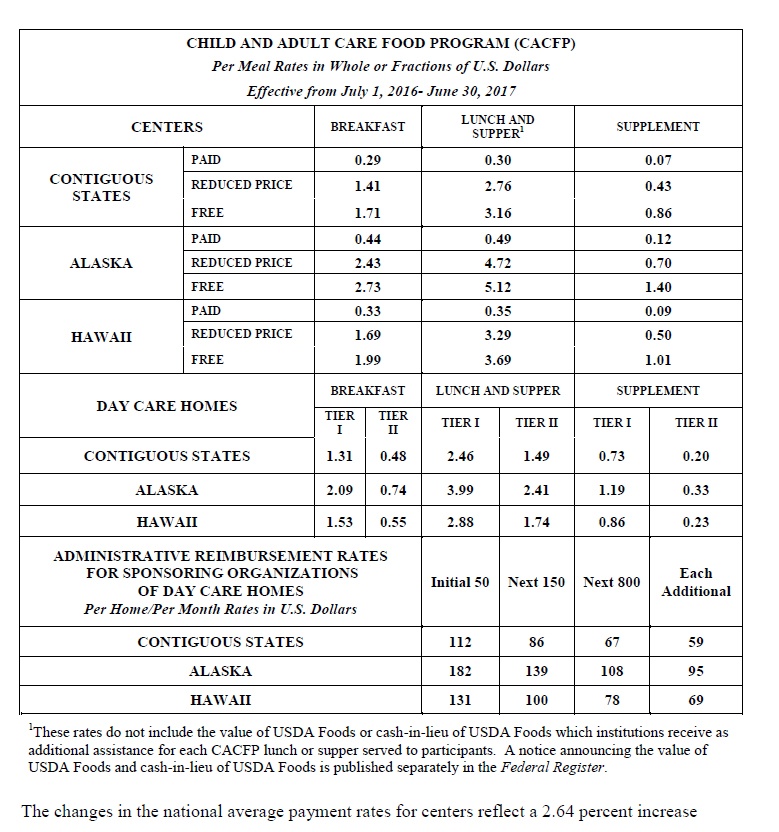The U.S. Department of Agriculture (USDA) released its new reimbursement rates for the Child and Adult Food Care Program (CACFP). The rates are effective from July 1, 2016 through June 30, 2017. USDA is required to update reimbursement rates for the program annually, on July 1, to reflect changes in the Consumer Price Index.
The following is a summary of USDA’s announcement:
 National Average Payment Rates for Centers
National Average Payment Rates for Centers
Rates for breakfast increased 5 cents for reduced price rates and free rates in the Contiguous States and in Hawaii. Paid rates did not increase in these regions, however, the rates for Alaska increased across the board—1 cent increase for the paid rate and 7 cent increases for both the reduced price and free rates.
Rates for lunch or supper increased 9 cents for reduced price and free rates in the Contiguous states and Hawaii; rates in Alaska increased by 13 cents for reduced price and free rates.
Snack rates did not increase much—1 and 2 cent increases for reduced price and free rates in the Contiguous States and Hawaii and 2 and 3 cents in Alaska.
Payment Rates for Day Care Homes
Unfortunately, rates for day care homes decreased or stayed the same.
Breakfast and snack rates decreased by 1 cent for tier I and saw no change in tier II in Contiguous states and Hawaii; Alaska saw a decrease of 2 cents in tier I and 1 cent in tier II.
Lunch rates decreased by 2 cents for tier I and 1 cent for tier II in the Contiguous state and Hawaii; 3 cents for tier I and 2 cents for tier II in Alaska.
Administrative payments to sponsors increased by 1 to 2 dollars, depending on the location and the number of homes.
The Food Research & Action Center provides an explanation for why family child care reimbursement rates went down but centers went up:
- “USDA is required to update the reimbursement rates for inflation by using the Consumer Price Index for “food at home” to adjust family child care rates, and
- Consumer Price Index for “food away from home” to adjust center rates.
The Consumer Price Index for “food at home” went down (.7 percent) resulting in lower reimbursement rates for family child care homes. This decrease in reimbursement does not accurately reflect the real costs to providers.
The Consumer Price Index for “food away from home” went up (2.6 percent) resulting in higher reimbursement rates for centers.”
The chart summarizing the current reimbursement rates is below. Read a copy of the announcement.







